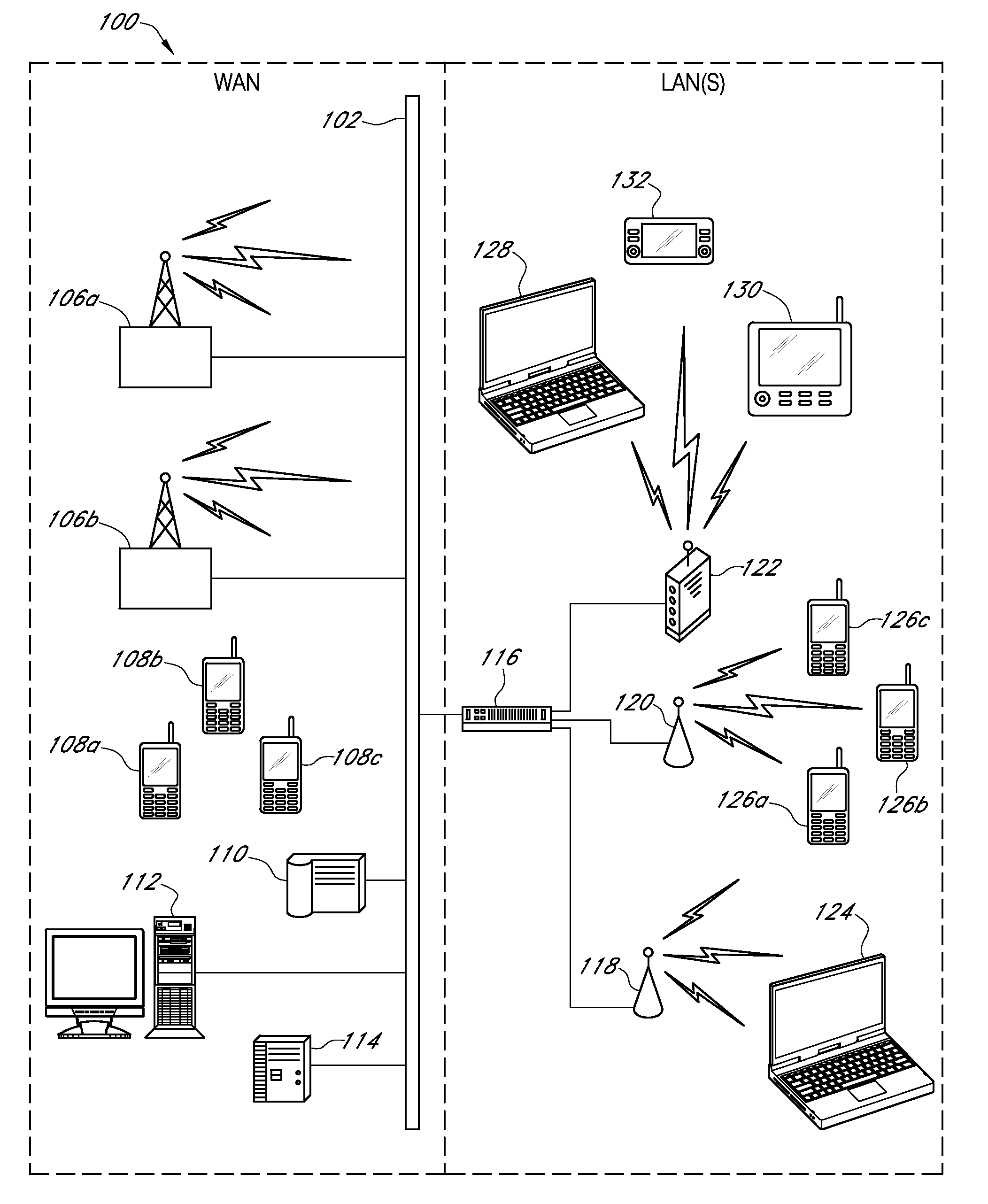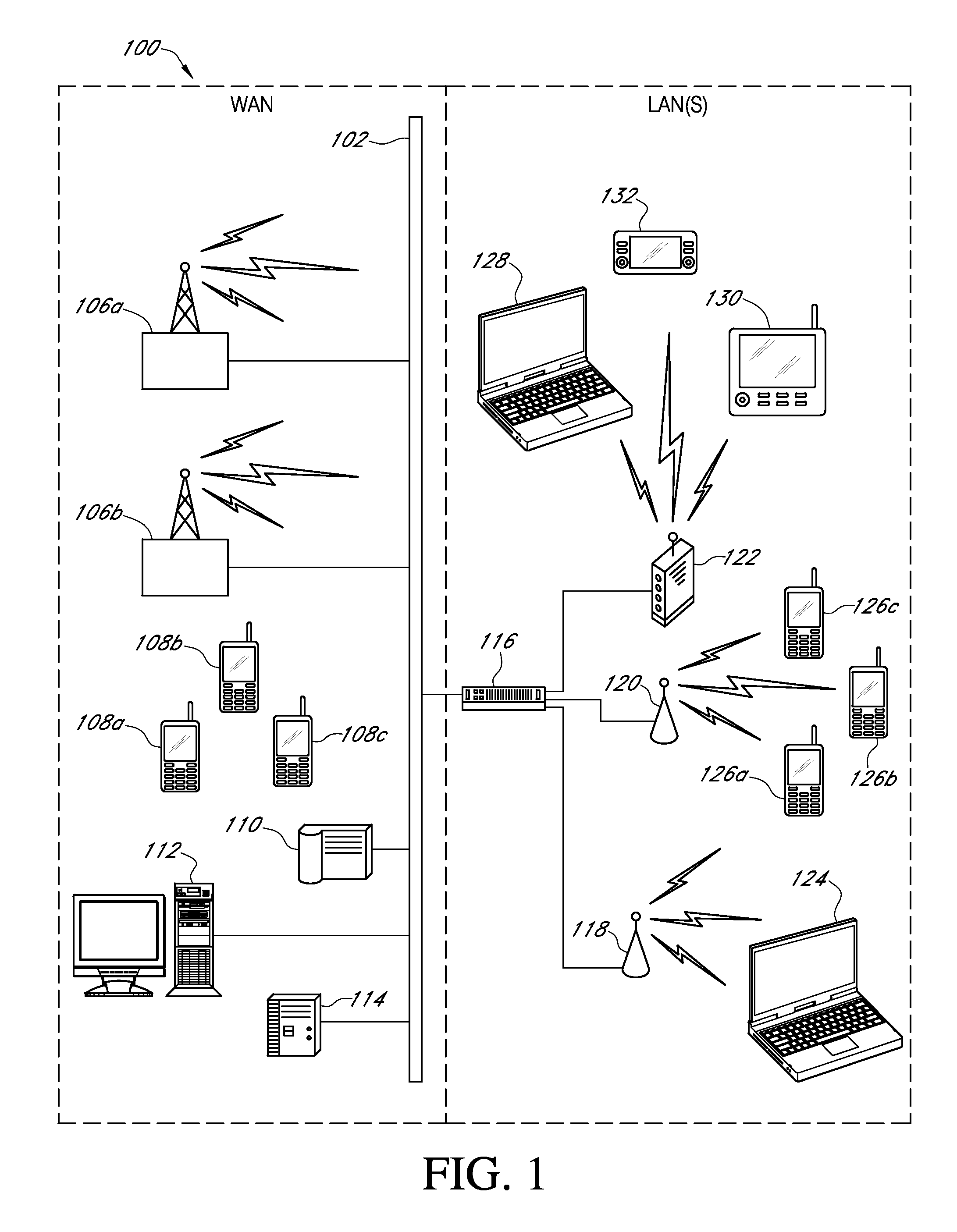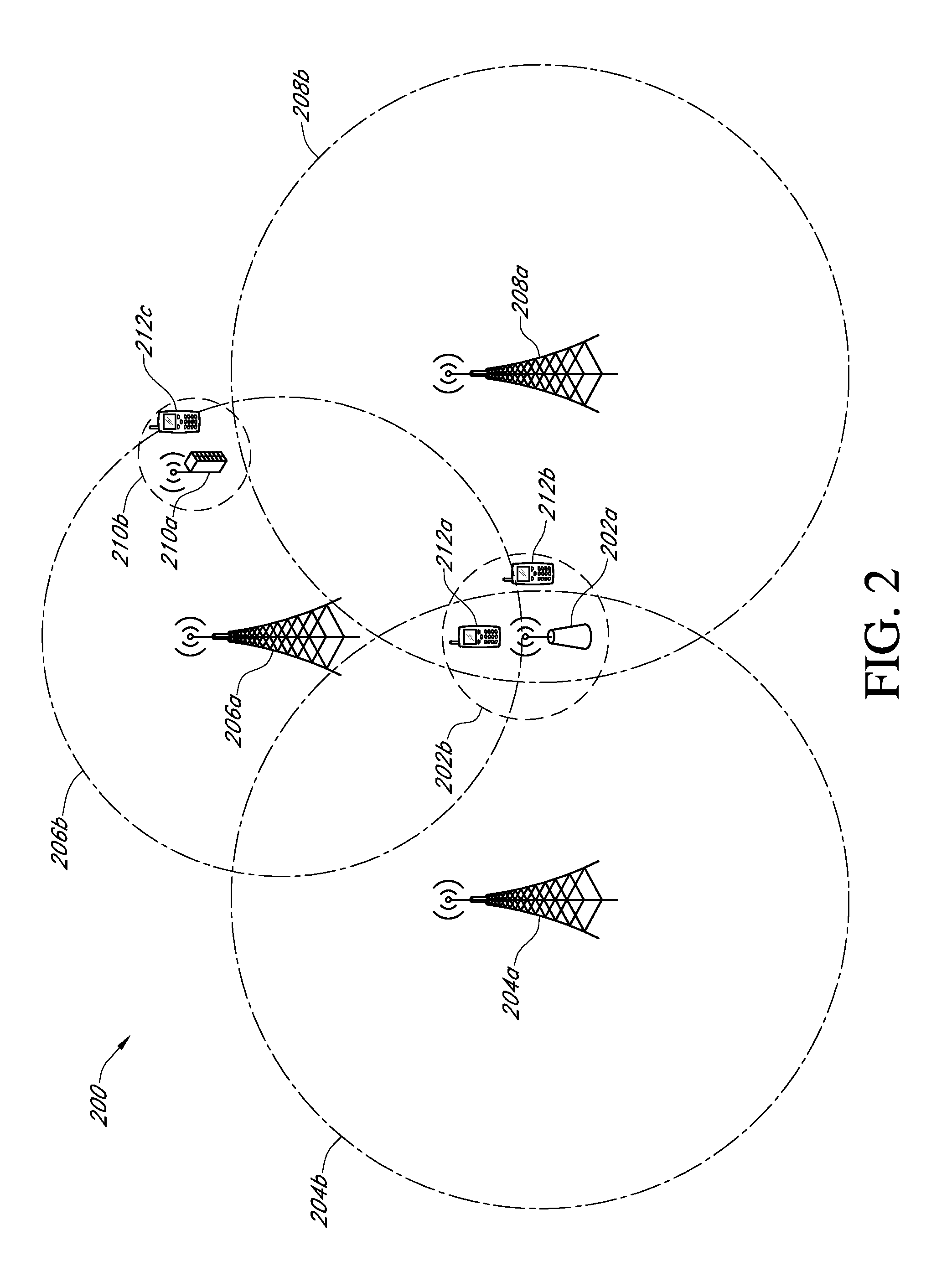Systems and methods for managing radio resources using extended management information bases in wireless networks
a wireless network and management information technology, applied in the field of self-organizational 4 g networks, can solve the problems of increasing complexity in the cost effective and cost-effective management of distributed network resources, increasing the cost of routine use of largely iterative solutions, and increasing the complexity of properly provisioning, managing and optimizing distributed network resources
- Summary
- Abstract
- Description
- Claims
- Application Information
AI Technical Summary
Benefits of technology
Problems solved by technology
Method used
Image
Examples
Embodiment Construction
[0030]In accordance with an exemplary embodiment of the present invention, FIG. 1 illustrates a network computing system 100 including various wireline and wireless computing devices that may be utilized to implement any of the radio resource parameter management and cell provisioning processes associated with various embodiments of the present invention. The networked computing system 100 may include, but is not limited to, a group of service provider controller devices 110, 112, and 114 (also referred to here as Radio Communications Controllers or RCCs); remote base stations 106a-b that may be associated with larger cells (e.g., macrocells and / or microcells) and may be overarching and / or neighboring base stations to any of the other smaller base stations 118, 120, and 122 within a particular region of the networked computing system 100; multiple remote user equipment 108a-c (e.g., optionally including cell phones, PDAs, net books, electronic book devices, etc.) that may be provide...
PUM
 Login to View More
Login to View More Abstract
Description
Claims
Application Information
 Login to View More
Login to View More - R&D
- Intellectual Property
- Life Sciences
- Materials
- Tech Scout
- Unparalleled Data Quality
- Higher Quality Content
- 60% Fewer Hallucinations
Browse by: Latest US Patents, China's latest patents, Technical Efficacy Thesaurus, Application Domain, Technology Topic, Popular Technical Reports.
© 2025 PatSnap. All rights reserved.Legal|Privacy policy|Modern Slavery Act Transparency Statement|Sitemap|About US| Contact US: help@patsnap.com



